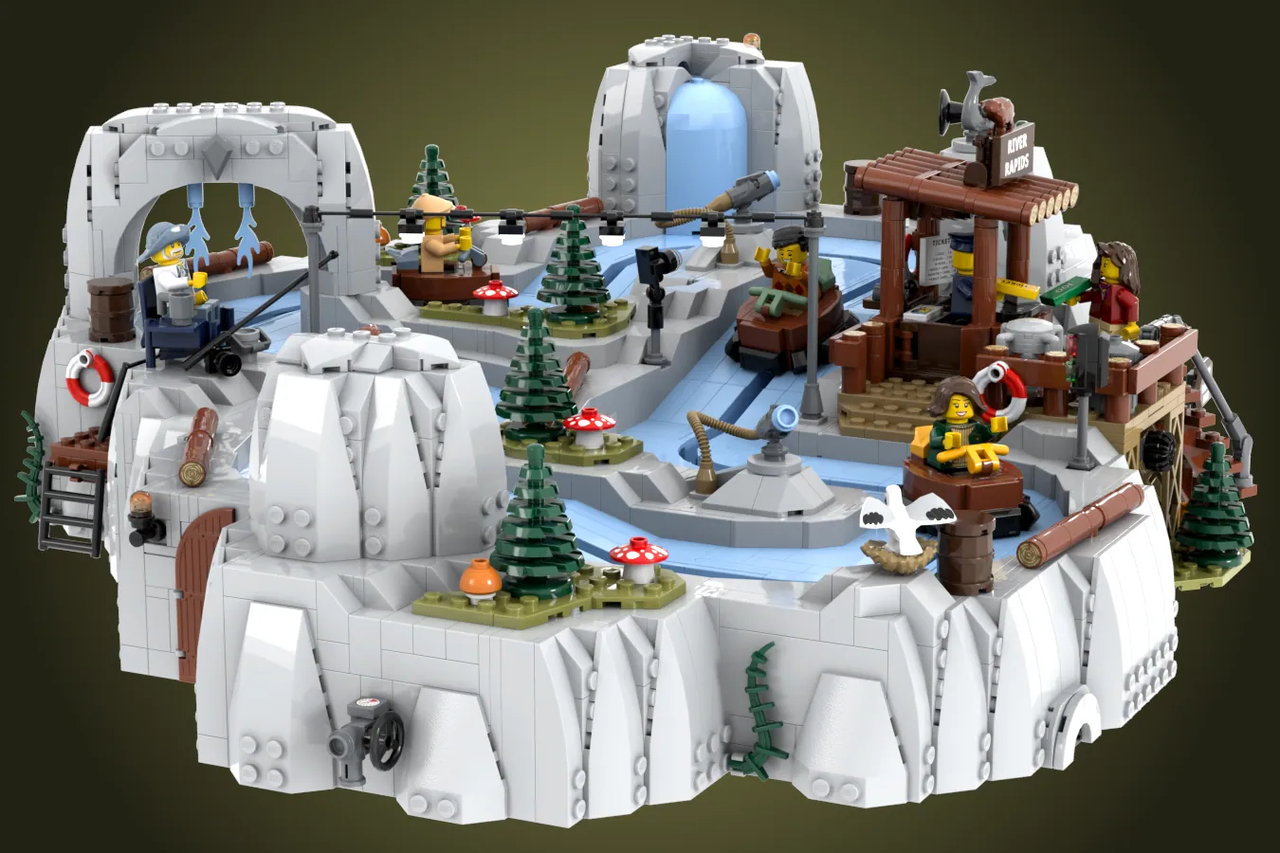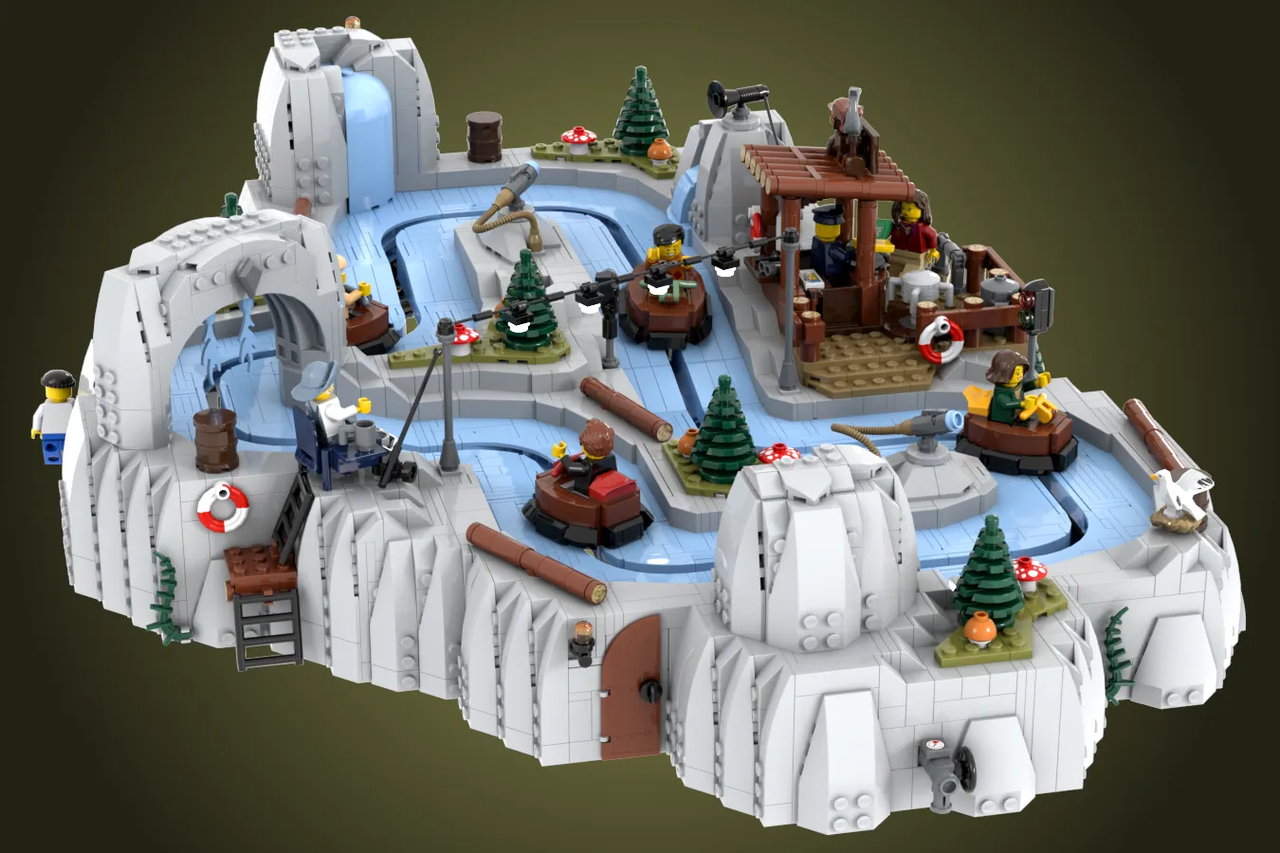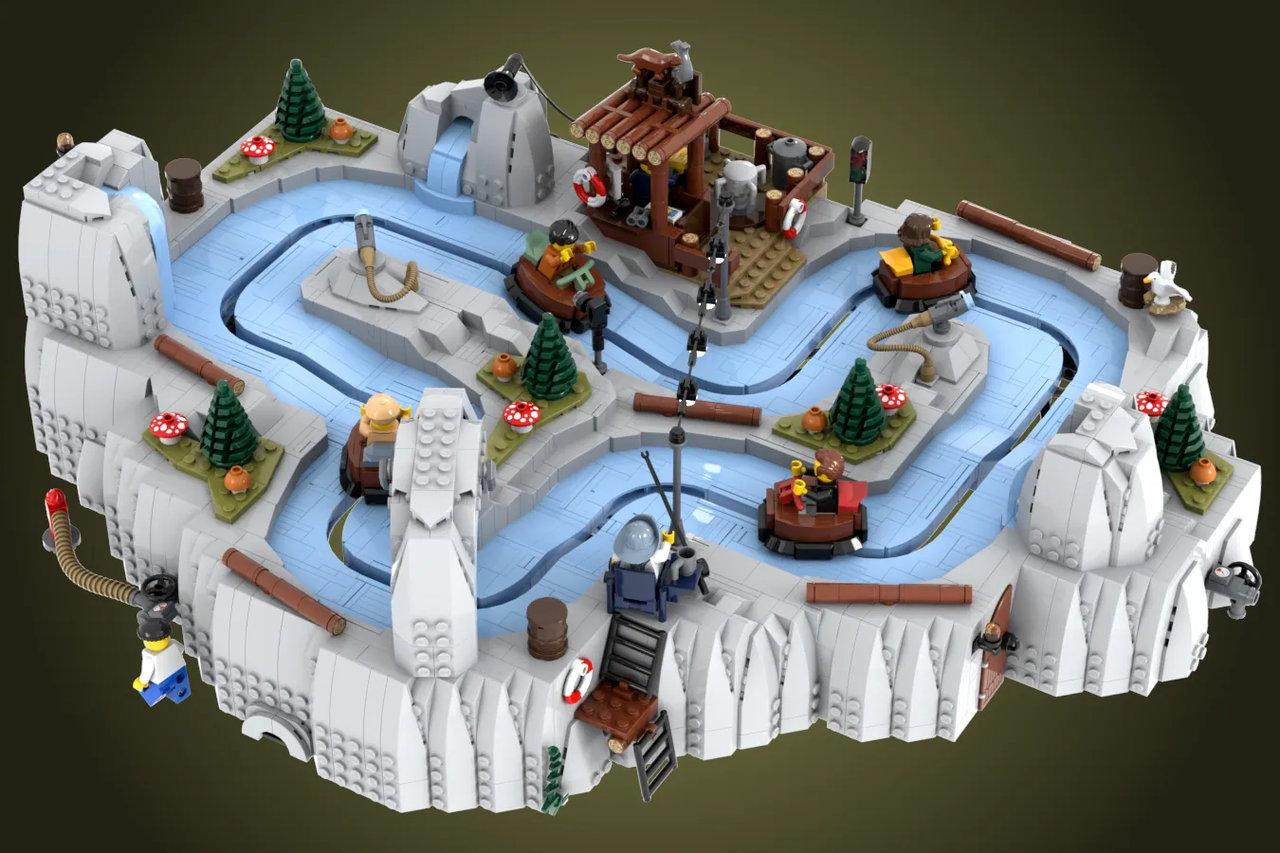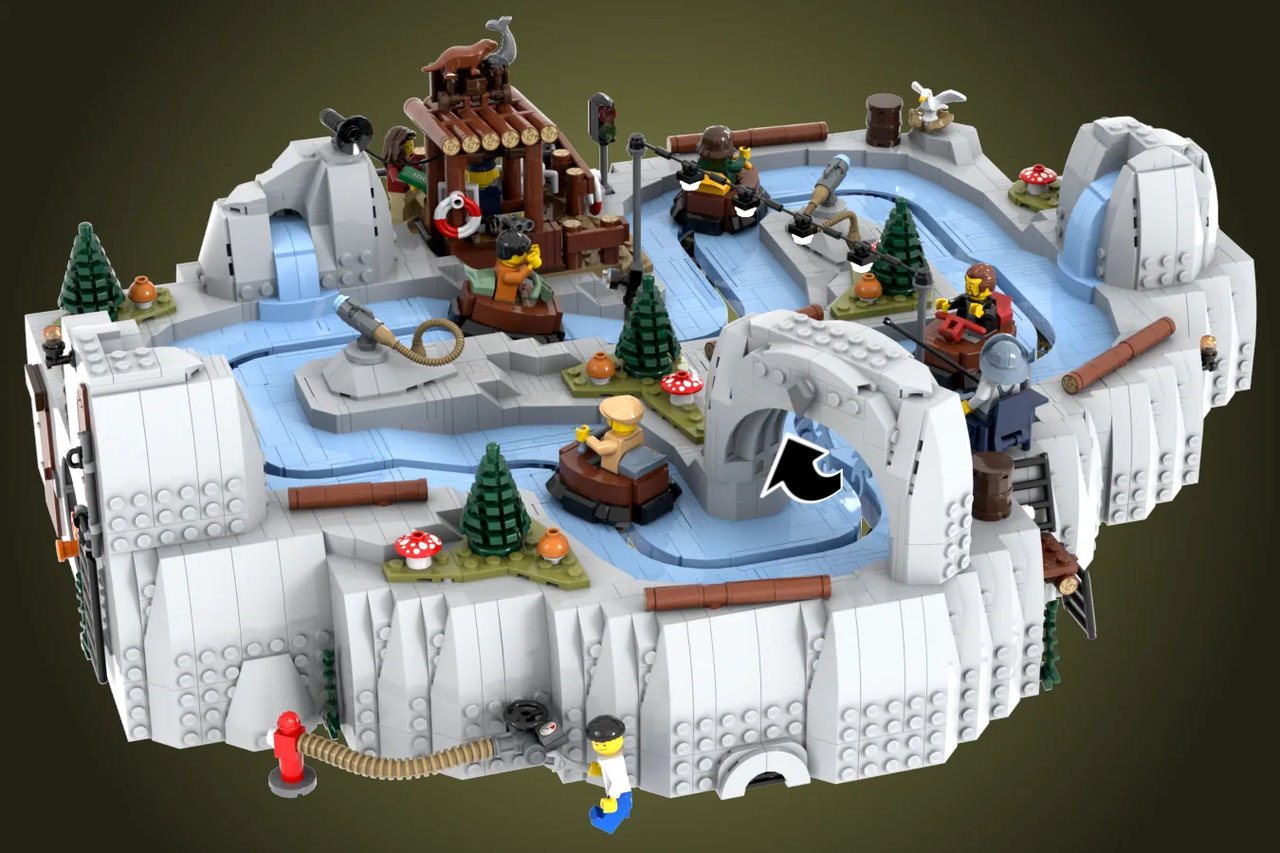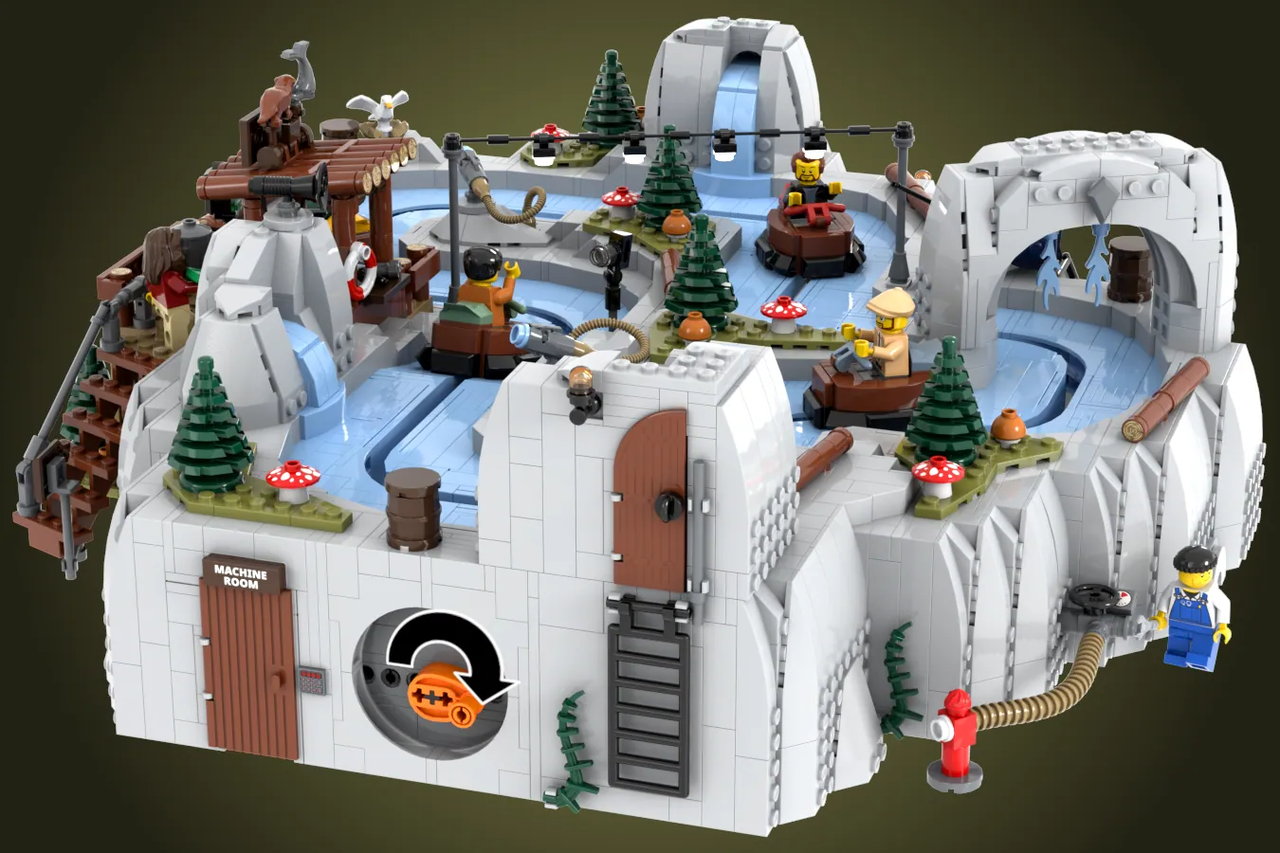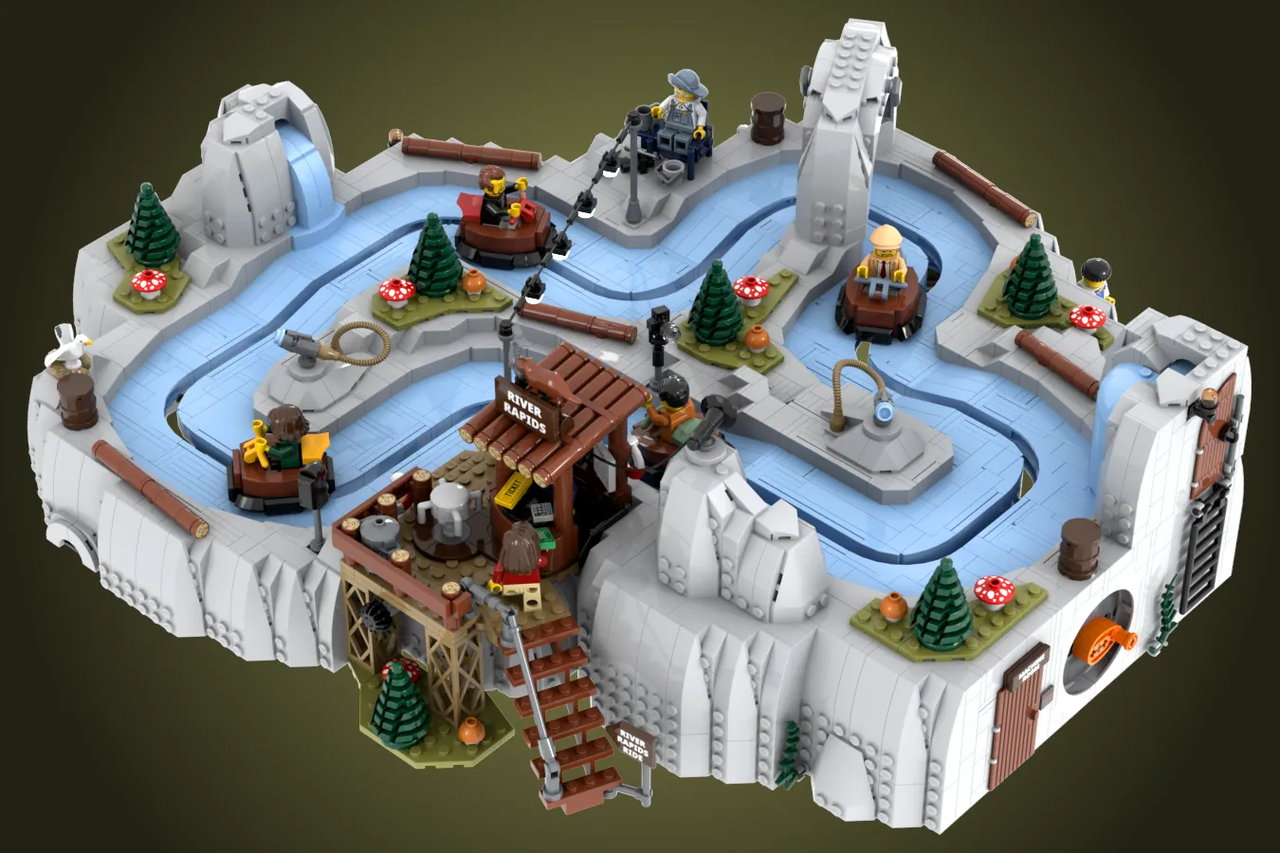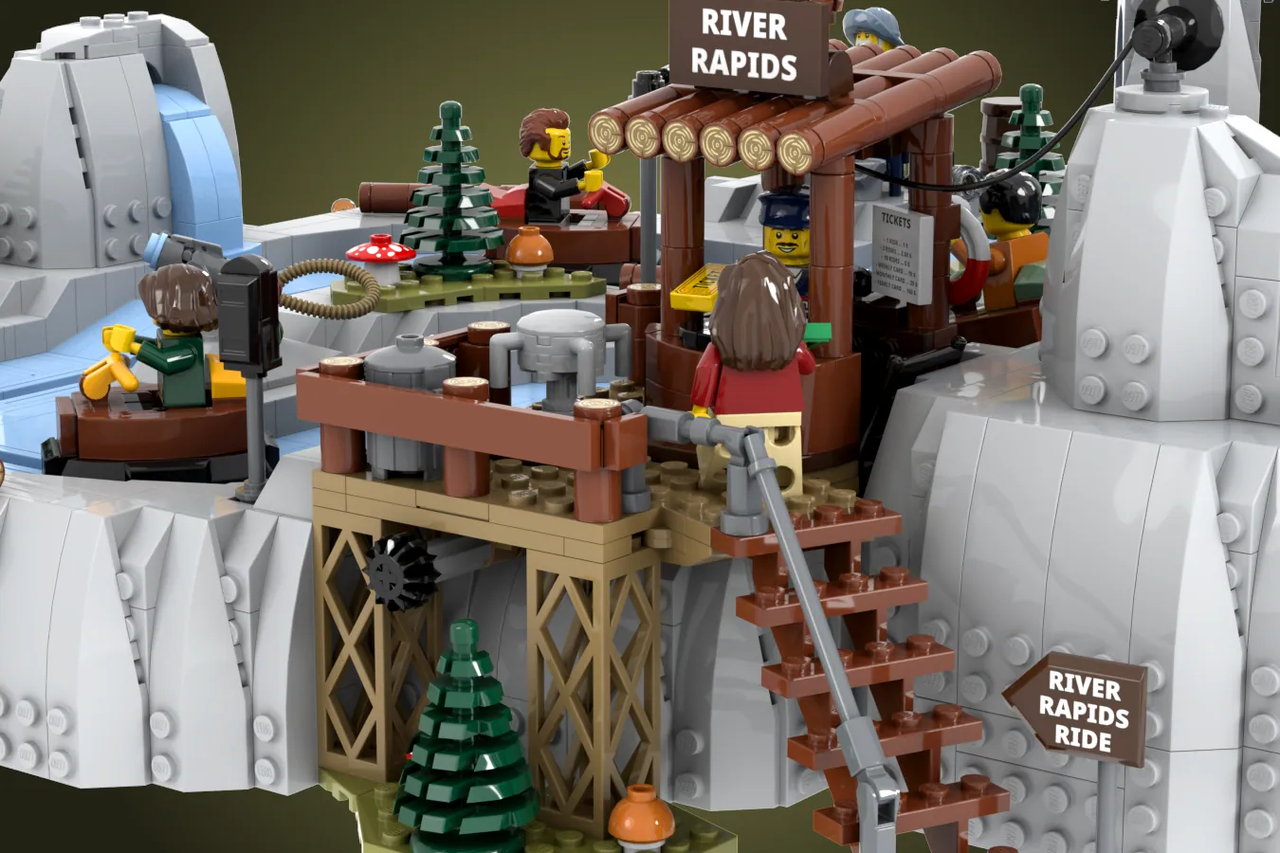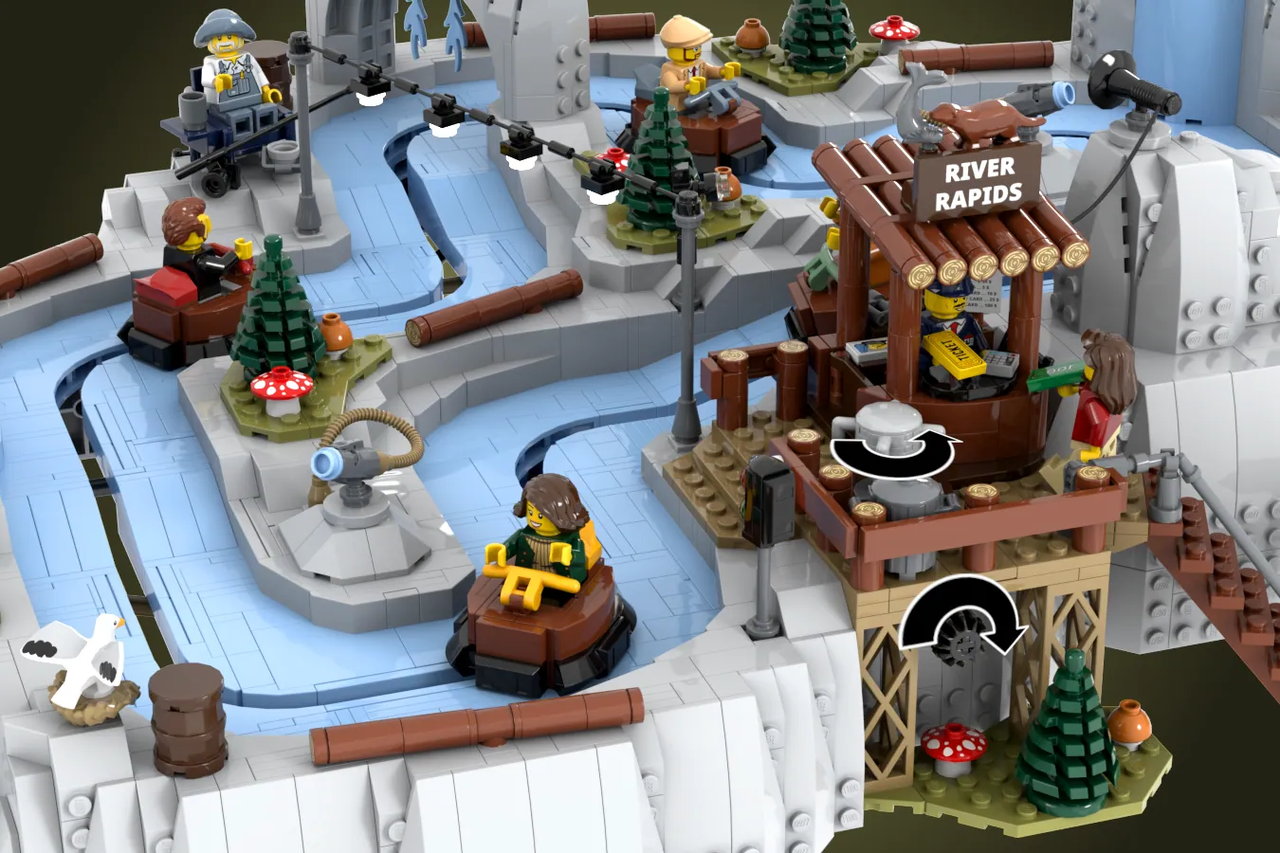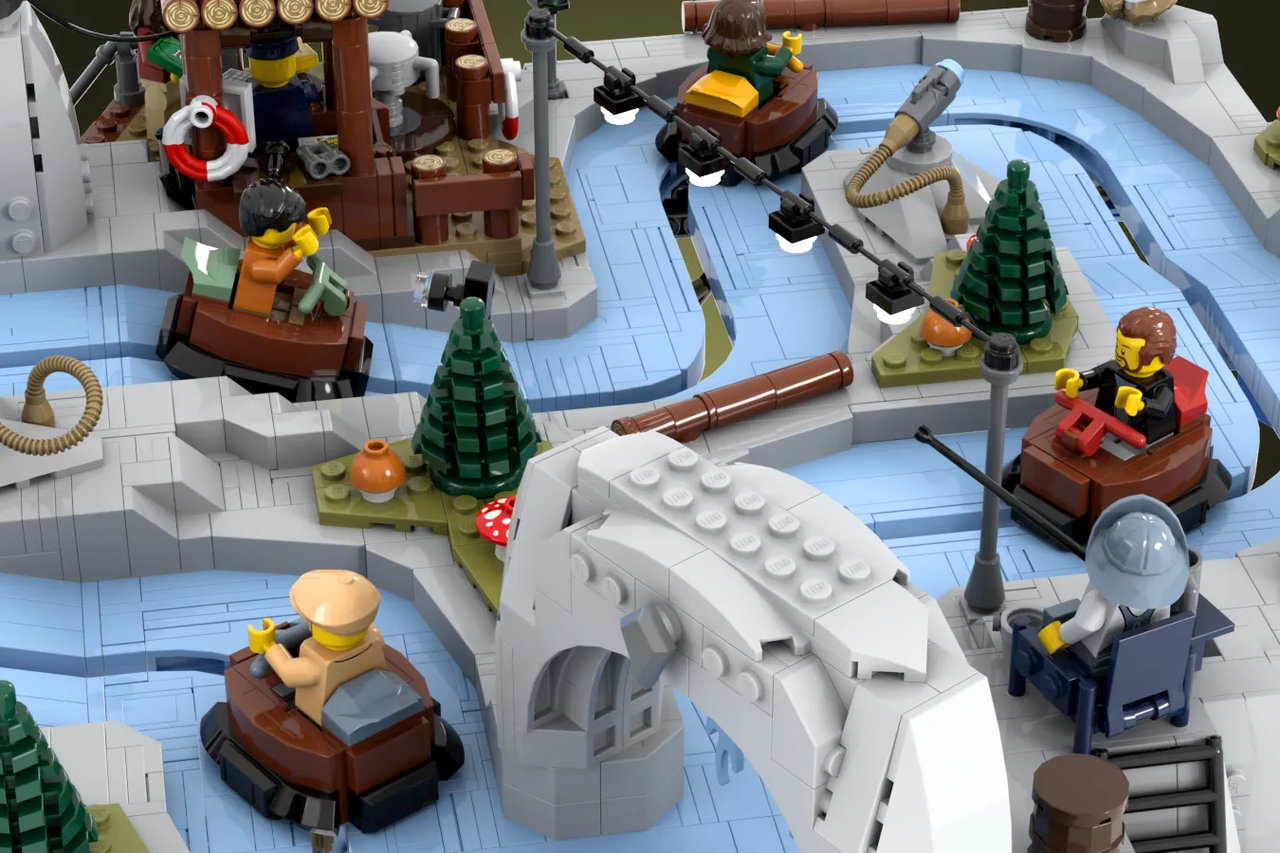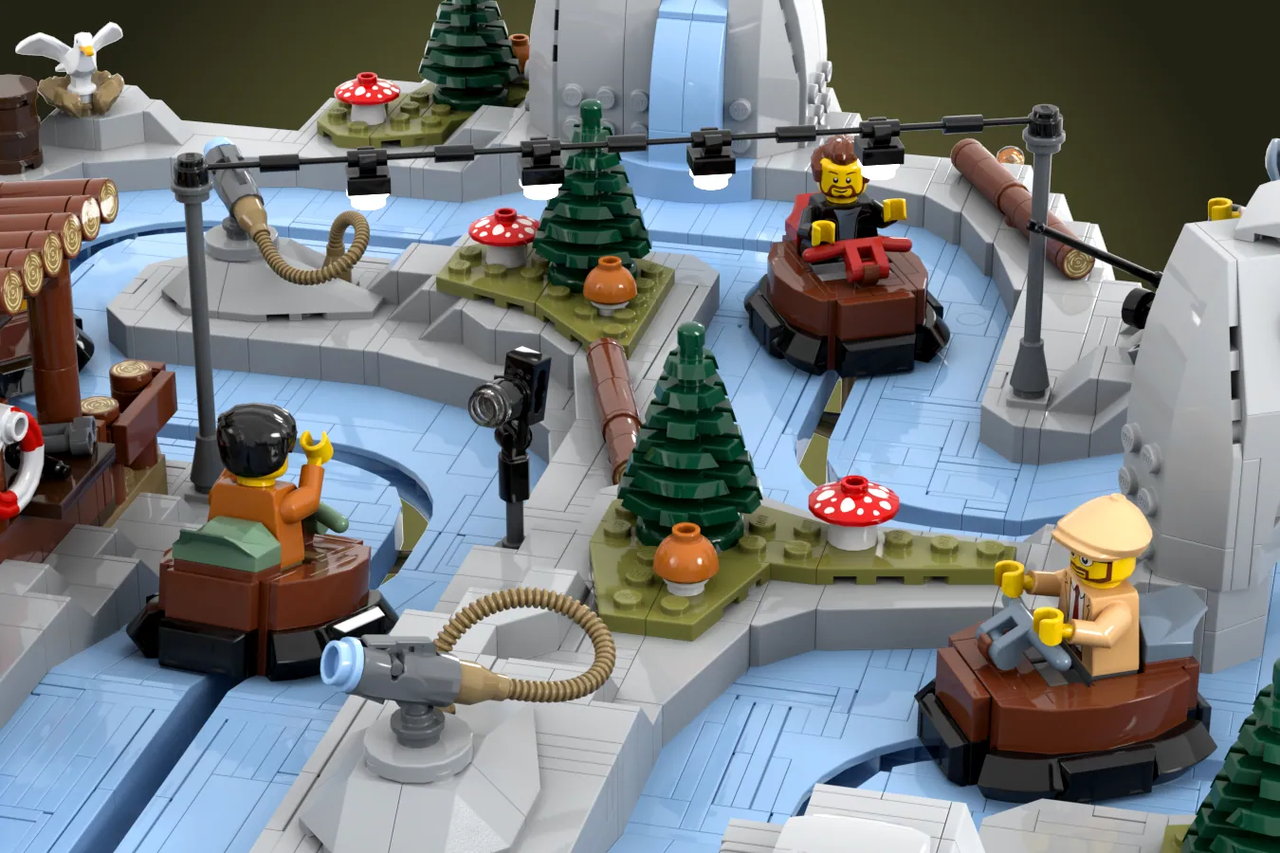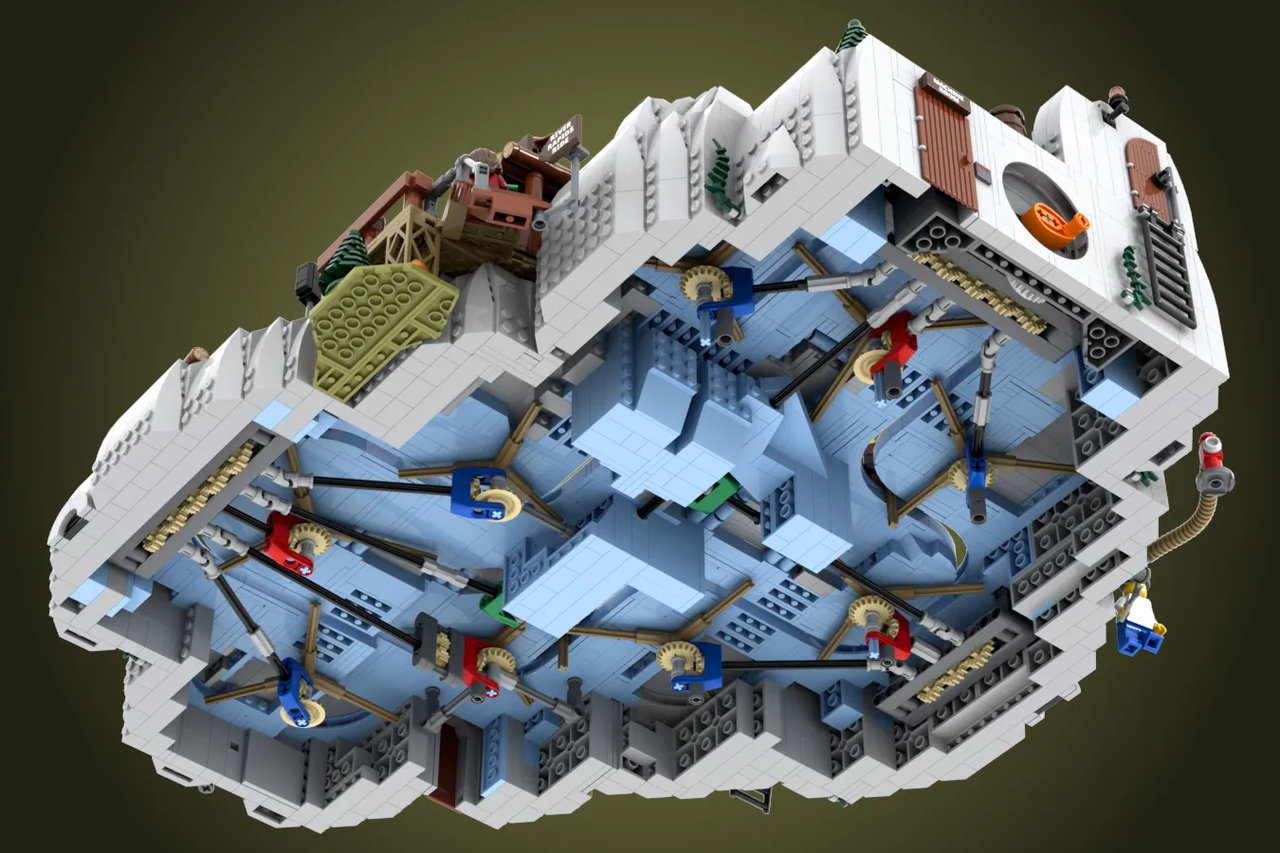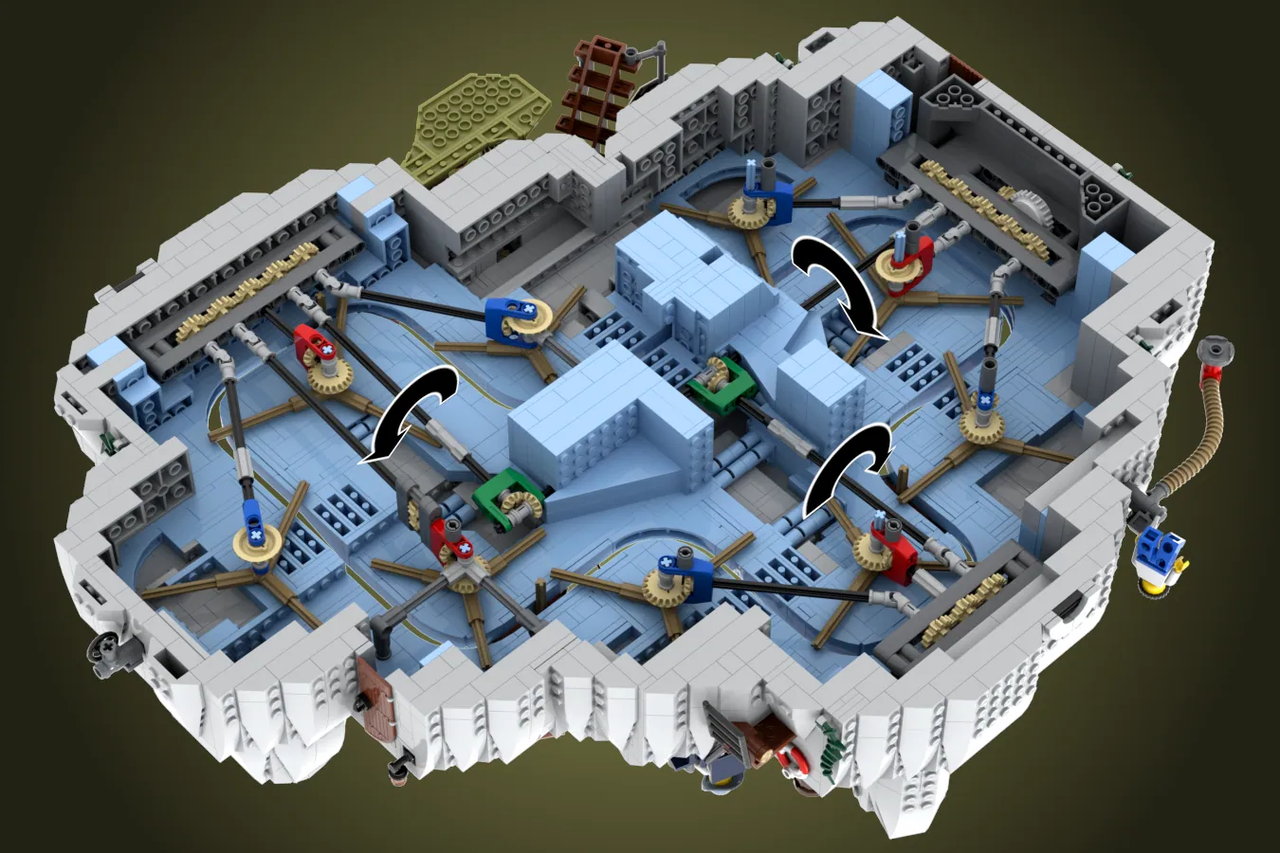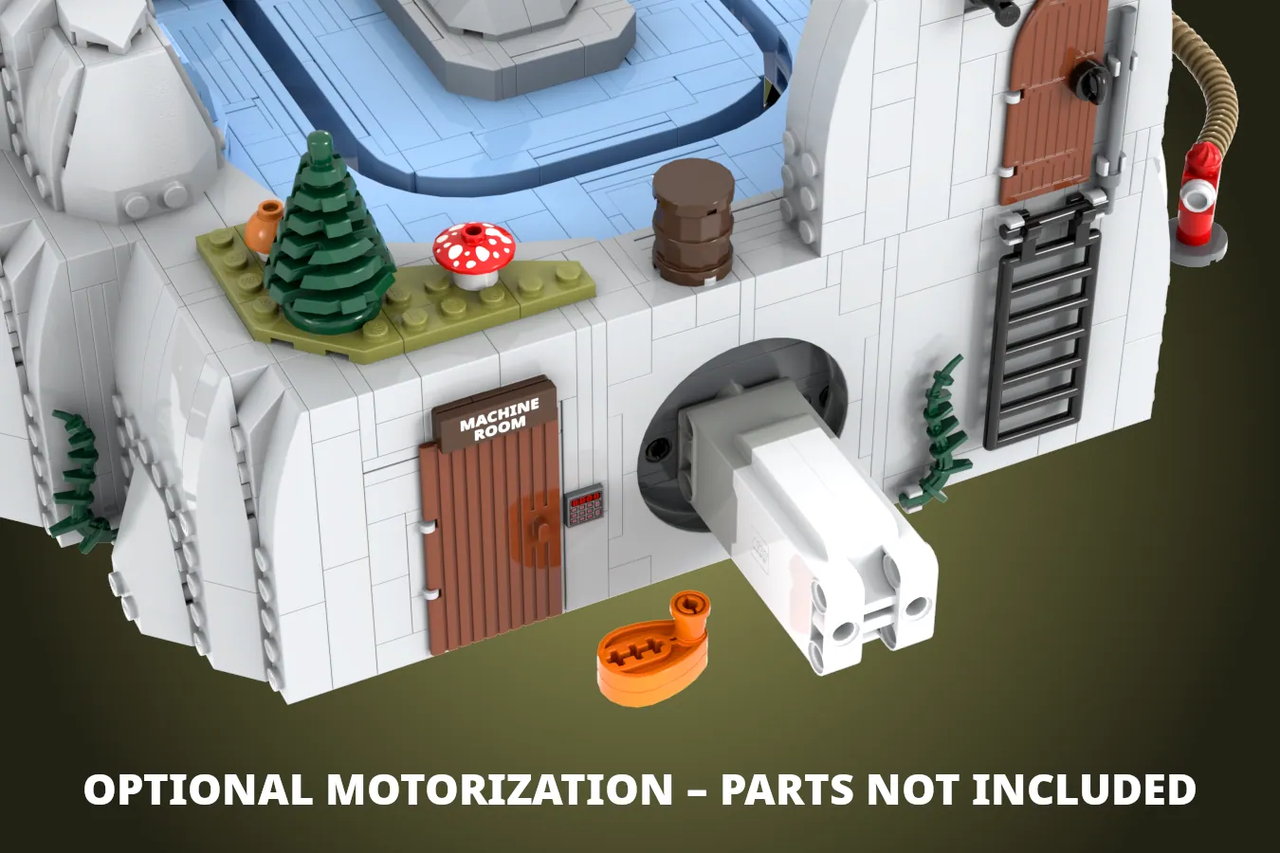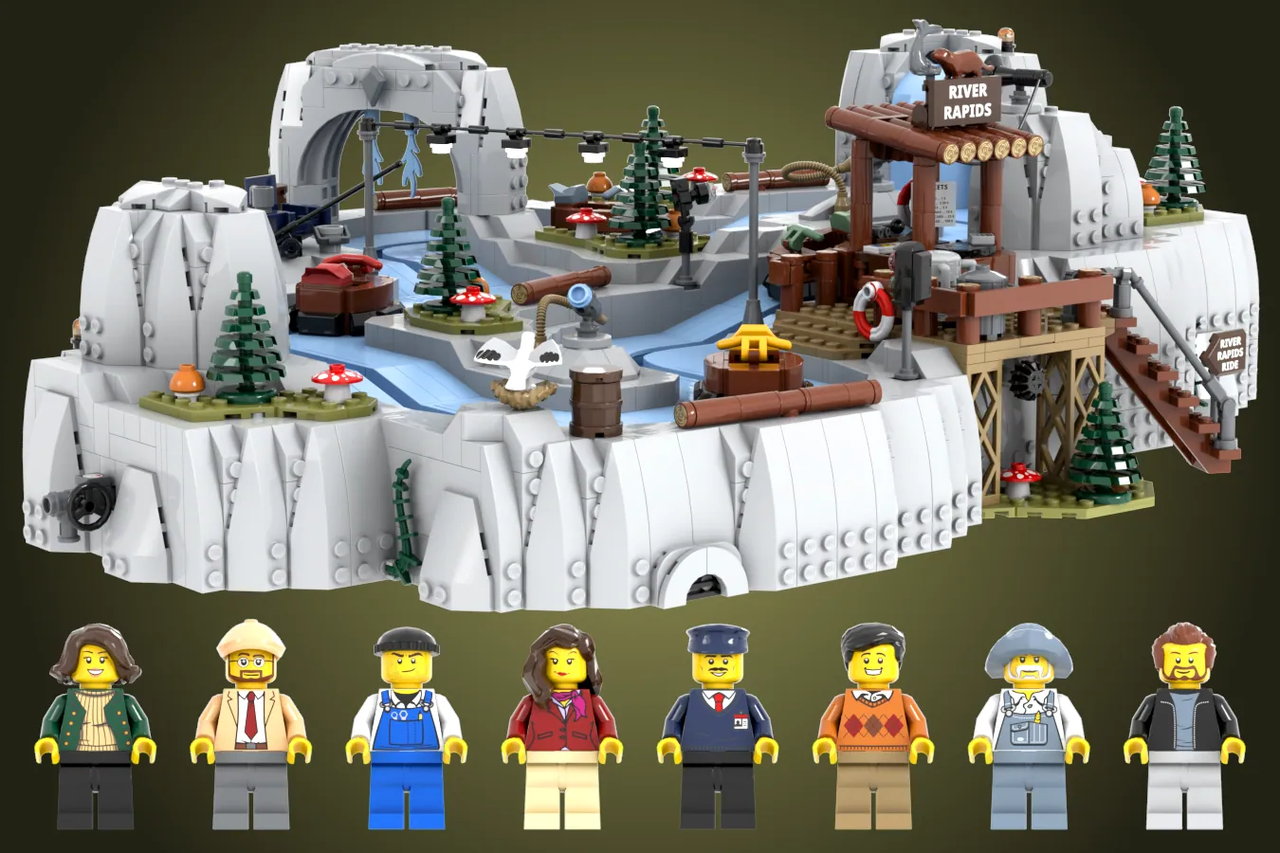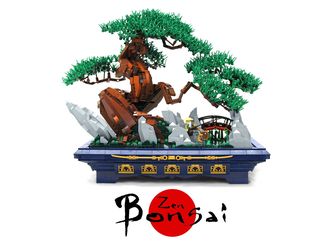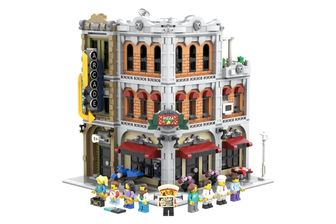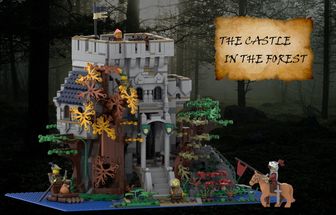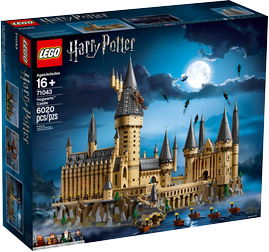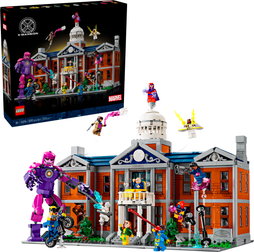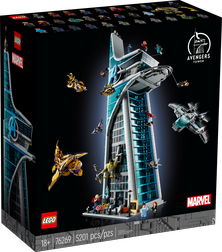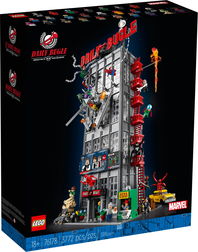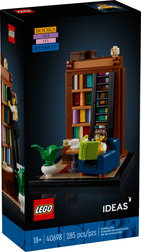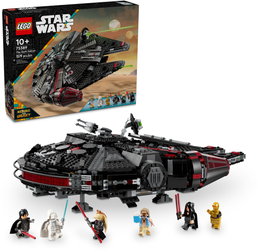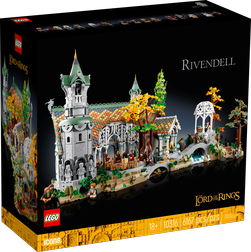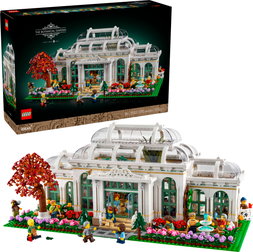激流勇进
Working River Rapids Ride – Fairground Rafting Coaster
作者:Baron von Barron / 发布于:2024-05-08
Welcome to the River Rapids Ride!
The Idea
Everybody off to the local fairground, there's yet another attraction: a brand-new river rapids ride! Be sure to buy a ticket at the booth, pass the turnstile, and jump into the next free car coming along the wild waterway. Then, have fun while you're traveling on a pretty random spin through several curves, rises, and waterfalls; brace yourself to be splashed by the drive-through shower under the rock arch and the water shooters; and, of course, be prepared for the final slide with a big splash at the end of the track. After your ride, you may buy a photo of your drop at the booth and line up for another round, or try one of the other various fairground attractions – either way, have a great day and enjoy the river rapids ride again soon!
The Build
The build consists of:
- River rapids ride with three waterfalls and four cars
- Drivetrain with nine counter-rotating rotors and central propulsion
- Rock arch with drive-through shower and two water shooters
- Ticket booth with a working turnstile
- Operator, mechanic, fisherman, and five passengers
The Functionality
The functionality is the following:
- The cars are guided through the waterway by a vertical axle at their bottom, which runs in the conveyor slot of the track.
- The axles are tackled by the rotors in the inside of the rock massif and push the cars forward; please also see images 12 & 13.
- The position of the axles within the cars can be set either more towards their front to make the cars run more straight forward, or more towards their center to increase their tendency to spin randomly around.
- The rotors are engaged and run in opposite directions (red mounting = counter-clockwise, blue mounting = clockwise), so the cars are passed along from one rotor to another until they reach the final slide, where they run down simply driven by gravity.
- The drivetrain can be optionally motorized in many different ways, but the easiest is surely simply attaching a motor to the central propulsion with two pins; please also see image 14.
The Data
Parts: 3000
Dimensions: 52 cm x 44 cm x 16 cm
Thank you very much for your attention!
Baron von Barron
投稿状态
10000
票支持
评审中
状态
获得10000票支持 2024-08-02
获得5000票支持 2024-06-17
获得编辑选择 2024-06-11
获得1000票支持 2024-05-17
获得100票支持 2024-05-08
作者投稿 2024-05-08

